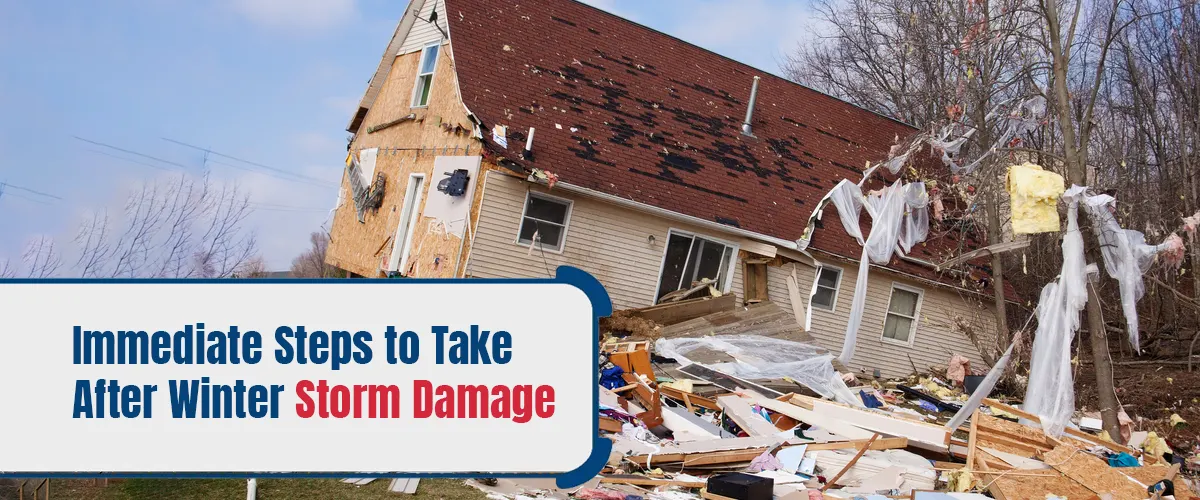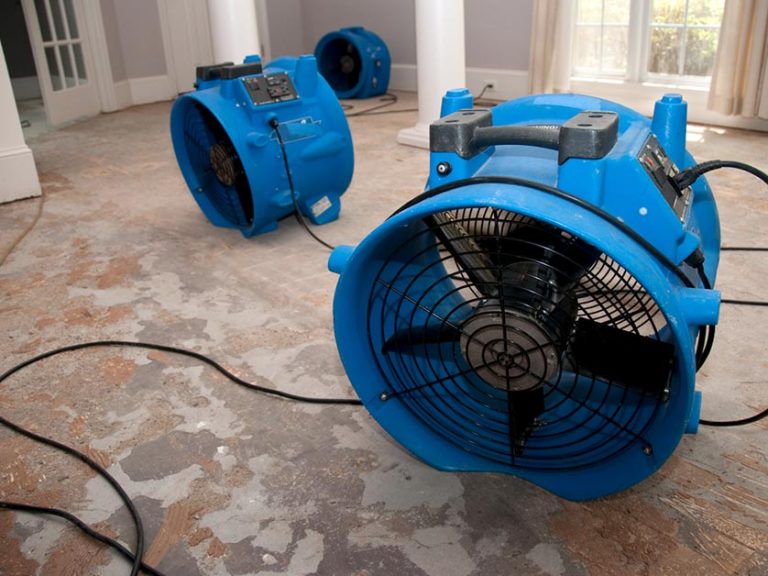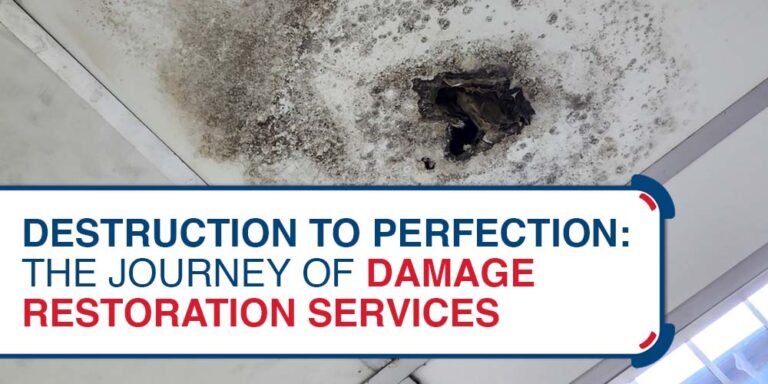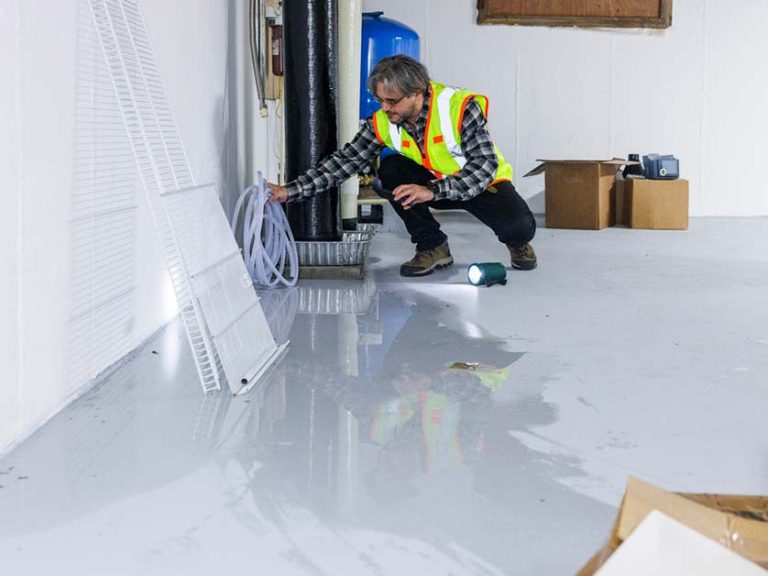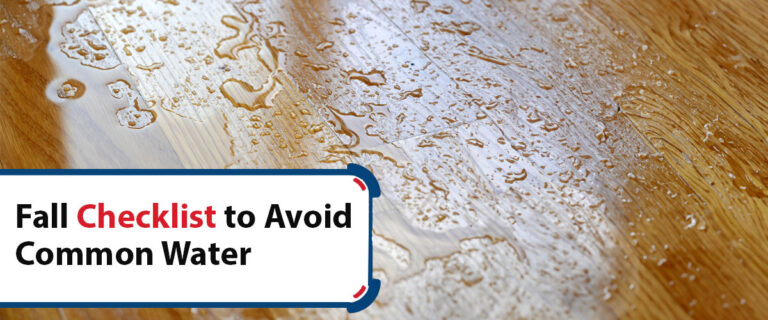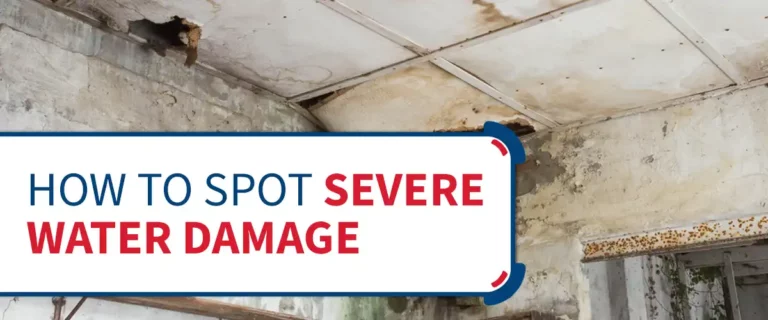Dealing with winter storm damage? It’s never easy. We know winter storms are inevitable, and dealing with the aftermath can be a real challenge. Whether you’d like to join the bandwagon of doomsday preppers or just want to be fit for any likely natural calamity, you came to the right place. This article will walk you through the essentials like saving important documents, protecting your home, and ensuring your family’s safety. Breathe deep, we’ve got you covered. Here are a few steps to guide you through the aftermath of a winter storm:

1. Prioritize Safety First
Safety should always be your top priority. Before diving into any winter storm damage assessment or repairs:
- Ensure personal safety: Ensure everyone in your household is accounted for and uninjured.
- Monitor official channels: Keep an ear out. Radios, local news, or even quick glances at the National Weather Service can keep you in the loop. Knowledge is power, after all.
- Evacuate safely: If you smell gas or other unusual odors, deliberately and calmly evacuate the property. Inform someone reliable about your location and destination, and avoid risky areas or moving vehicles.

2. Inspect Damaged Areas
Your home is more than just bricks and mortar. It is memories. Once you are sure it is safe:
- Survey your property: Walk around your property, both inside and out, and list down any visible damage. Take notice of any cracks or structural oddities. Your safety could hinge on these observations. Be extra cautious around broken glass, exposed nails, and other sharp objects.
- Check your Roof: Snow might look soft, but it is heavy. Keep an eye on your roof. Those icicles are hinting at more pressing issues.
- Check for stability: Check that your surroundings are stable – no risk of falling trees or collapsing structures. If your home’s structure seems compromised, it might be best to stay elsewhere until professionals can assess it.

3. Keep Distance From Live Electricity
Water and electricity? Not the best mix. Be cautious about these electrical hazards:
- Power precautions: If there’s any flooding, turn off your power, but only if you can do so without standing in water.
- Handle wet electrical devices cautiously: Avoid touching wet electrical fixtures or appliances. Give them time to dry. And if you’re uncertain about their safety, consulting an expert is a good idea.
- Downed power lines: If you see them, report them to authorities immediately and keep your distance.
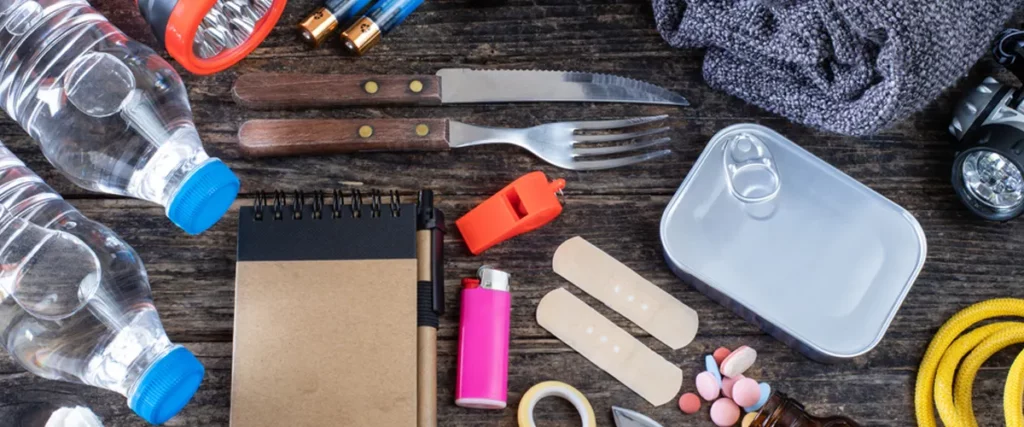
4. Gather Important Belongings
Imagine the essentials you can’t live without. Now, let’s talk about securing them.
- Compile an emergency kit: Think basics: food, water, medicines. You can check this handy “Basic Disaster Supplies Kit” checklist from Ready.gov, which might be the lifesaver you didn’t know you needed. If you are relocating temporarily, pack a few clothes and personal items.
- Document protection: Birth certificates, IDs, insurance papers, those cute baby photos – keep them safe. Store these in a waterproof bag or container.

5. Check for Water Damage and Mold Potential
Water damage is like that of uninvited guests just showing up anywhere. And mold? Where there is water, mold might soon follow:
- Water removal: Remove any standing water from your home. Use whatever you have – pumps, vacuums, or the old-school mop. If you aren’t able to handle the situation efficiently, you can call and ask for help from water damage experts in Kansas City.
- Proper air ventilation: Fresh air can be a powerful ally—open windows and doors to promote air circulation and faster drying.
- Mold alert: Damp spots can be mold’s playground. Keep an eye out for mold growth in the coming days, particularly in damp areas. If uncertain, don’t hesitate to learn more about molds from the US Environmental Protection Agency (EPA).

6. Communicate with Your Neighbors and Community
Community isn’t just about proximity, it’s about being there for one another.
- Neighborly check: A simple knock or a shout across the fence can mean the world to a neighbor in need. And who knows? They might have that tool or tip you were looking for.
- Information sharing: Sometimes, collective wisdom is better than individual insights. Pooling resources and updates can be invaluable.
- Use community resources: From shelters to food banks, community resources are like safety nets.
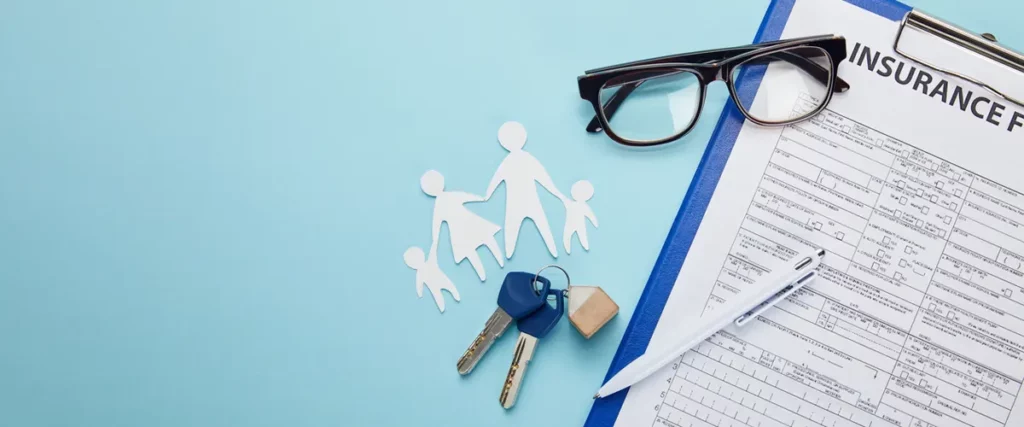
7. Document Everything for Insurance
Now, let’s talk about getting you back on your feet financially. This step can significantly speed up your recovery process:
· Photograph damages
Take clear photographs of all the water damage, both to the property and belongings. Your camera can be your best advocate when dealing with insurance claims.
· Assemble key documents
Retrieve receipts or lists of belongings if available. The smoother the process, the quicker you are back to living normally.
· Talk to your insurance provider
Engage early and stay informed. Initiate communication with your insurance provider early on to understand the claim process.

Path to Recovery: Seek Professional Help
Facing the aftermath of a winter storm can be daunting, but with a systematic approach, you’ll get through it. Take things one step at a time, ensuring your safety and that of your loved ones.
In situations like this, remember you don’t have to go through it alone. Professional water damage repair services in Kansas City are just a call away. Their expertise can make your road to recovery smoother, helping you restore peace and normalcy faster.
Humanity and kindness are most visible amidst adversity. Stay strong, stay safe, and know that brighter days are just around the corner.


